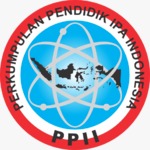Distribution of Radiation Doses Received by Organs at Risk in Cervical Cancer Using Intracavitary Brachytherapy Technique
DOI:
https://doi.org/10.29408/kpj.v9i2.29017Keywords:
Immediately Brachytherapy, Distribuion dose, Organ At Risk, Cancer Serviks, HDR BrachytherapyAbstract
A study entitled Distribution of Radiation Doses Received by Organs at Risk in Cervical Cancer Using Intracavitary Brachytherapy Technique has been conducted. The study was conducted at the Radiotherapy Sub-Installation of Prof. Dr. I.G.N.G Ngoerah Hospital with the aim of determining the distribution of doses received by High Risk Clinical Target Volume (D2cc) and Organs at Risk (D90). Determining the distribution of doses received by High Risk Clinical Target Volume (D2cc) and Organs at Risk (D90) in cervical cancer patients is still within the recommended limits in ICRU Report 89. This study used ionizing radiation by inserting radioactive cobalt-60 using internal radiotherapy techniques, namely intracavitary brachytherapy. Before the irradiation process is carried out, there is a planning stage or Treatment Planning System (TPS). The reference for this research standard is for HRCTV of 95% -107% and for OAR bladder ≤80% rectum ≤75%. The average percentage of dose distribution received by HRCTV was 104.2% which is equivalent to 7.2 Gy which is still within the range of 95%- 107%, in the bladder it was 69.4% which is equivalent to 5.Gy which is still below the value ≤80%, and in the rectum it was 57% which is equivalent to 4.1 Gy which is still below the value ≤75%. The dose distribution value in HRCTV and OAR was still within the tolerance limit listed in the recommended value in GEC-ESTRO-ABS, and ICRU Report 89.
References
Abdel, M. W., Gondhowiardjo, S. S., Arthur, ;, Rosa, A., Lievens, Y., Noura El-Haj, ;, Jose, ;, Rubio, A. P., Gregorius, ;, Prajogi, B., Helgadottir, H., Zubizarreta, ; Eduardo, Meghzifene, A., Ashraf, V., Hahn, S., Williams, T., & Gospodarowicz, M. (2021). Global Radiotherapy: Current Status and Future Directions-White Paper. Dalam JCO Global Oncol (Vol. 7). https://ascopubs.org/go/authors/open-access
Abdullah, R., Abdullah, N. H., Mohamed, M., Idris, N. R. N., Yusoff, A. L., Chen, S. C., & Zakaria, A. (2017). High dose rate 192Ir source calibration: A single institution experience. Journal of Physics: Conference Series, 851(1). https://doi.org/10.1088/1742-6596/851/1/012019
Apriantoro, N. H., Kartika, Y., Kurniawan, R., Kunci, K., & Payudara, K. (2023). Teknik Radioterapi Kanker Payudara Post Mastektomi dengan Teknik Intensity Modulated Radiation Therapy. Indonesian Journal for Health Sciences, 7(1), 22– 28.
Aziz, M., Hidayanto, E., Diah Dwiana Lestari, dan, Fisika, J., Sains dan Matematika, F., Diponegoro, U., & Sains dan Teknologi Nuklir Terapan -BATAN, P. (2015). Penentuan Aktivitas Co-60 dan Cs-137 pada Sampel Unknown dengan Menggunakan Detektor HPGe. Dalam Youngster Physics Journal (Vol. 4, Nomor 2). https://ejournal3.undip.ac.id/index.php/bfd/article/view/8411/8175
Beyzadeoglu, M., Ozyigit, G., & Ebruli, C. (2010). Basic Radiation Oncology. Dalam Basic Radiation Oncology. Springer Berlin Heidelberg. https://doi.org/10.1007/978- 3-642-11666-7
De Tomasi, J. B., Opata, M. M., & Mowa, C. N. (2019). Immunity in the cervix: Interphase between immune and cervical epithelial cells. Dalam Journal of Immunology Research. Hindawi Limited (Vol. 2019, Hal. 13).https://doi.org/10.1155/2019/7693183
Dewi, D. A. (2018). Analisis Teknik Radioterapi pada Kanker Serviks dengan Teknik 2D dan 3D-CRT di Unit Radioterapi Instalasi Radiologi Rumah Sakit Umum Pusat Dr. Kariadi Semarang. Jurusan Teknik Radiodiagnostik dan Radioterapi Politeknik Kesehatan Kemenkes.
Fadhila, S. N. (2022). Analisis Radionuklida Cs- 137, Co-60 dan I-131 Pada Sampel Air Sungai Cisadane di Daerah Tangerang Menggunakan Spektrometer Gamma. Universitas Islam Negeri Syarif Hidayatullah.
Fitriatuzzakiyyah, N., Sinuraya, R. K., & Puspitasari, I. M. (2017). Cancer Therapy with Radiation: The Basic Concept of Radiotherapy and Its Development in Indonesia.Indonesian Journal of Clinical Pharmacy, 6(4), 311–320. https://doi.org/10.15416/ijcp.2017.6.4.311
Gianfaldoni, S., Gianfaldoni, R., Wollina, U., Lotti, J., Tchernev, G., & Lotti, T. (2017).An overview on radiotherapy: From its history to its current applications in dermatology. Open Access Macedonian Journal of Medical Sciences, 5(4 Special Issue Global Dermatology), 521–525.https://doi.org/10.3889/oamjms.2017.122
Gondhowiardjo, S. (2003). Brakhiterapi Dalam Terapi Kanker Anorektal. Makara Kesehatan, 7(2). Gul, O. V., Inan, G., & Basaran, H. (2021). Impact of different treatment plans on EQD2for intracavitary brachytherapy of cervical cancer. Journal of the Egyptian National Cancer Institute, 33(1). https://doi.org/10.1186/s43046-021-00084-2
Haie, C. M., Pötter, R., Van Limbergen, E., Briot, E., De Brabandere, M., Dimopoulos,J., Dumas, I., Hellebust, T. P., Kirisits, C., Lang, S., Muschitz, S., Nevinson, J., Nulens, A., Petrow, P., & Wachter-Gerstner, N. (2005). Recommendations from Gynaecological (GYN) GEC-ESTRO Working Group (I): Concepts and terms in 3D image based 3D treatment planning in cervix cancer brachytherapy with emphasis on MRI assessment of GTV and CTV. Radiotherapy and Oncology, 74(3), 235– 245. https://doi.org/10.1016/j.radonc.2004.12.015
Halperin, E. C., David E. Wazer, Carlos A. Perez, & Luther W. Brady. (2019). Principlesand Practice of Radiation Oncology Seventh Edition (7 ed.). Wolters Kluwer.
Haris, A. (2021). Otomasi Penentuan Nilai Radioaktivitas Radioisotop Am- 241,Co- 60,Cs-137, dan Na-22 Menggunakan Multi-Output Machine Learning. UniversitasIslam Negeri Syarif Hidayatullah.
Haryani, S. (2016). Prevalensi Kanker Serviks Berdasarkan Paritas di RSUP. Dr. M. Djamil Padang Periode Januari 2011-Desember 2012. Dalam Jurnal Kesehatan Andalas (Vol. 5, Nomor 3). http://jurnal.fk.unand.ac.id
Hendratno, D. T. (2011). Pengukuran Laju Dosis Serap Maksimum Pesawat TeleterapiCo-60 di RSUD Dr. Moewardi Surakarta. Jurusan Fisika Fakultas Matematika dan Ilmu Pengetahuan Alam Universitas Sebelas Maret.
IAEA. (2023). Dosimetry In Brachytherapy-An International Code Of Practice For Secondary Standards Dosimetry Laboratories And Hospitals.
Indrazah, R. (2019). Reiradiasi pada Kasus Kanker Serviks Rekuren Lokal Pasca Radioterapi Di Unit Radioterapi RSUP DR Kariadi Semarang. Jurusan Teknik Radiodiagnostik dan Radioterapi Politeknik Kesehatan Kemenkes.
Latifa, L., Ratini, N. N., Sudarsana, I. W. B., Suryatika, I. B. M., Ratnawati, I. G. A., Gunawan, A. A. N., & Irhas, R. (2023). Analysis of Radiation Dose Distribution
Nagappan, B., Kumar, Y., Patel, N., Dhull, A., & Kaushal, V. (2015). Brachytherapy source calibration, reviews, and consistency of 192 Ir high- dose rate afterloading sources supplied over the period of 10 years: A retrospective analysis . Radiation Protection and Environment, 38(4), 144. https://doi.org/10.4103/0972-
0464.176158
Rivard, M. J., Coursey, B. M., DeWerd, L. A., Hanson, W. F., Huq, M. S., Ibbott, G. S., Mitch, M. G., Nath, R., & Williamson, J. F. (2004). Update of AAPM Task Group No. 43 Report: A revised AAPM protocol for brachytherapy dose calculations. Dalam Medical Physics (Vol. 31, Nomor 3, hlm. 633–674). John Wiley and Sons Ltd. https://doi.org/10.1118/1.1646040
Saptiama, J., Indra Subechi, Moch Pujiyanto, Anung Lubis, & Hotman Setiawan. (2014).Permanent Seed Implant Dosimetry (PSID) TM Versi 4.5 Sebagai Program Isodosis Dan Treatment Planning System (TPS) Untuk Brakiterapi Abstrak Permanent Seed Implant Dosimetry (PSID) TM Versi 4.5 Sebagai Program. Journal of Radioisotopes and Radiopharmaceuticals, 17(1).
Susilo, N. Y., Indrati, R., Sulaksono, N., Radiodiagnostik, J. T., Radioterapi, D., & Semarang, P. (2019). Tata Laksana Brakhiterapi Co-60 Teknik Intrakaviter Lengkap pada Kasus Kanker Serviks. Jurnal Radiografer Indonesia, 2(2), 87–93.
Tedgren, Å. C., Bengtsson, E., Hedtjärn, H., Johansson, Å., Karlsson, L., Lamm, I. L.,Lundell, M., Mejaddem, Y., Rosenschöld, P. M. af, Nilsson, J., Wieslander, E., &Wolke, J. (2008). Experience from long-term monitoring of RAKR ratios in 192Irbrachytherapy. Radiotherapy and Oncology, 89(2), 217–221.
Winarno, Audia Nurmansya, V., & Miskiyah, Z. (2021). Radioterapi Kanker Cervix dengan Linear Accelerator (LINAC). Jurnal Biosains Pascasarjana, 23(02). https://doi.org/10.20473/jbp.v5i2.2021.24-35
Wulandari, R. (2012). Peran Radioterapi Eksterna Adjuvan Terhadap Penderita Kanker Payudara Stadium Lokal-Lanjut. Program Pendidikan SarjanaKedokteran Fakultas Kedokteran Universitas Diponegoro.
Wulandari, Y., Hartoyo, P., & Anita, F. (2014). Analisis Jumlah Kadar Hemoglobin DanSel Darah Putih (Leukosit) Pada Mencit (Mus Musculus) Sebelum Dan Sesudah Radiasi Gamma Co-60 Dengan Berbagai Variasi Dosis. Jurnal Ilmiah GIGA, 17(1), 9–18.
Yue, N. J. (2006). Principles and practice of brachytherapy dosimetry. RadiationMeasurements, 41(SUPPL. 1). https://doi.org/10.1016/j.radmeas.2007.01.001
Gunawan . 2023. StatiStika Parametrik, NoN Parametrik daN multivariat https://www.researchgate.net/publication/369441006_StatiStika_Parame trik_NoN_Parametrik_daN_multivariat
Downloads
Published
Issue
Section
License
Copyright (c) 2025 Kappa Journal

This work is licensed under a Creative Commons Attribution-ShareAlike 4.0 International License.
Semua tulisan pada jurnal ini menjadi tanggungjawab penuh penulis. Jurnal Kappa memberikan akses terbuka terhadap siapapun agar informasi dan temuan pada artikel tersebut bermanfaat bagi semua orang. Jurnal Kappa dapat diakses dan diunduh secara gratis, tanpa dipungut biaya, sesuai dengan lisensi creative commons yang digunakan







